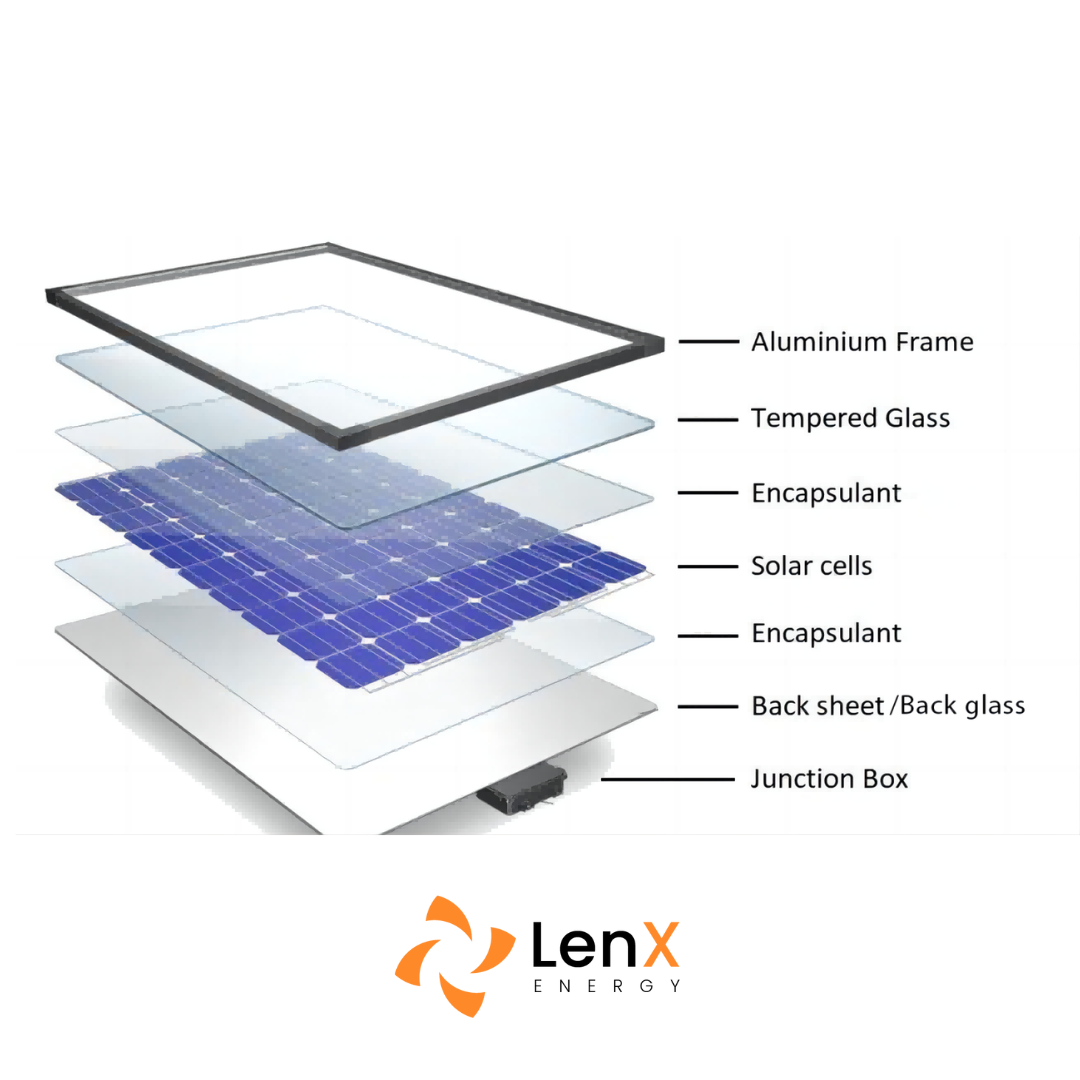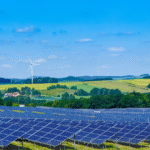What Are Solar Panels? A Green Solution for the Future
Have you ever wondered how sunlight can “transform” into electricity to light up your home? That’s precisely the job of solar panels – a groundbreaking technology that converts the sun’s boundless energy into usable electricity, helping you save on costs and contribute to environmental protection.
Simply put, a solar panel (also known as a photovoltaic or PV panel) is a device capable of directly converting light energy into electrical energy through a process called the photovoltaic effect. Imagine it as a “mini power plant” on your rooftop, operating completely free of charge, powered by daylight.
Solar Panel Structure: The Foundation of Efficiency
While a solar panel might look simple, it’s a sophisticated combination of multiple layers of materials. Understanding its structure will help you assess the quality and durability of the product:

Tempered Glass Layer: Located at the very top, this layer protects the internal solar cells from harsh weather conditions like rain, wind, dust, or minor impacts.
Top EVA (Ethylene Vinyl Acetate) Layer: A transparent, flexible film situated directly beneath the glass. It securely holds and cushions the solar cells, while also providing effective moisture resistance.
protects the solar cells, while also providing effective moisture resistance.
Solar Cells: These are the “heart” of the panel, typically made from silicon. Each small cell is where the magic of light-to-electricity conversion happens. These cells are connected in a series.
Bottom EVA (Ethylene Vinyl Acetate) Layer: Another layer of EVA sits below the solar cells, completing the encapsulation and adding mechanical stability.
Backsheet: Positioned at the very bottom, usually made of a composite material, it acts as an electrical insulator and moisture barrier, protecting the internal components from environmental factors.
Aluminum Frame: Encircles and secures the entire panel, providing structural rigidity and facilitating easy installation.
Junction Box: Located on the back of the panel, this enclosure houses the diodes and connection points for the electrical wiring, ensuring safe and efficient power transmission.
How Do Solar Panels Work? From Sunlight to Electricity
The process of converting light into electricity by a solar panel occurs thanks to the photovoltaic effect:
- Light Absorption: When sunlight (composed of photons) strikes the silicon solar cells, these photons transfer their energy to electrons within the semiconductor material.
- Electron Release: The energized electrons become “free” and begin to move.
- Electricity Generation: The unique structure of the solar cell (consisting of two semiconductor layers, P-type and N-type) creates an electric field. This field “guides” the electrons to move in a specific direction, forming a direct current (DC).
- Conversion to Alternating Current (AC): The direct current (DC) generated by the solar panel is sent to an inverter – a device often called the “brain” of the system. The inverter’s role is to convert this DC power into alternating current (AC), which is the type of electricity most appliances in our homes and businesses use.
- Power Supply: The AC power, once converted, is either fed into the national grid or supplied directly to your electrical appliances. If the system produces surplus electricity, this excess can be sold back to the utility company or stored in batteries (for off-grid or hybrid systems).
A Complete Solar Power System: More Than Just Panels!
To fully harness the benefits of solar panels, you need a complete system composed of several synchronously working components:
Solar Panels: The primary component for capturing sunlight.
Inverter: Converts DC to AC, optimizing system efficiency.
Mounting Structure: Secures the panels on the rooftop or ground, ensuring safety and optimal tilt angle.
Wiring and Electrical Panel: Ensures safe and efficient electricity transmission.
Monitoring Devices (optional): Allows you to track power production and system performance via a smartphone app or computer.
Battery Storage System (optional): Helps store electricity for use at night or during grid outages.
Benefits of Solar Panels: Why You Should Invest in Green Energy Today?
Installing solar panels offers a multitude of outstanding benefits, both economically and environmentally:
Significant Electricity Bill Savings: This is the most obvious benefit. You’ll drastically reduce or even eliminate your monthly electricity bill, especially during sunny seasons.
Long-Term Financial Relief: With a lifespan of 25-30 years, a solar panel system is a long-term investment that helps you stabilize energy costs for decades.
Environmental Protection: Using solar energy helps reduce carbon emissions, contributing to climate change mitigation and protecting our green planet.
Increased Property Value: A home or business with a solar power system typically has a higher market value.
Energy Independence: Reduces reliance on the national grid, especially beneficial for areas prone to power outages.
Government Incentives (where applicable): Many countries and localities offer policies to encourage solar power development, including feed-in tariffs (selling surplus electricity), tax incentives, which help optimize investment returns.
Enhanced Brand Image (for businesses): Businesses utilizing solar energy demonstrate a commitment to sustainable development, building a “green” image in the eyes of customers and partners.
Lenx-Energy is proud to be a pioneering provider of comprehensive solar panel solutions, from consulting and design to installation and maintenance. We are committed to delivering high-quality systems, optimal efficiency, and professional service. Are you ready to discover the potential of solar energy? Contact us today for a free consultation and a quote tailored to your needs!

